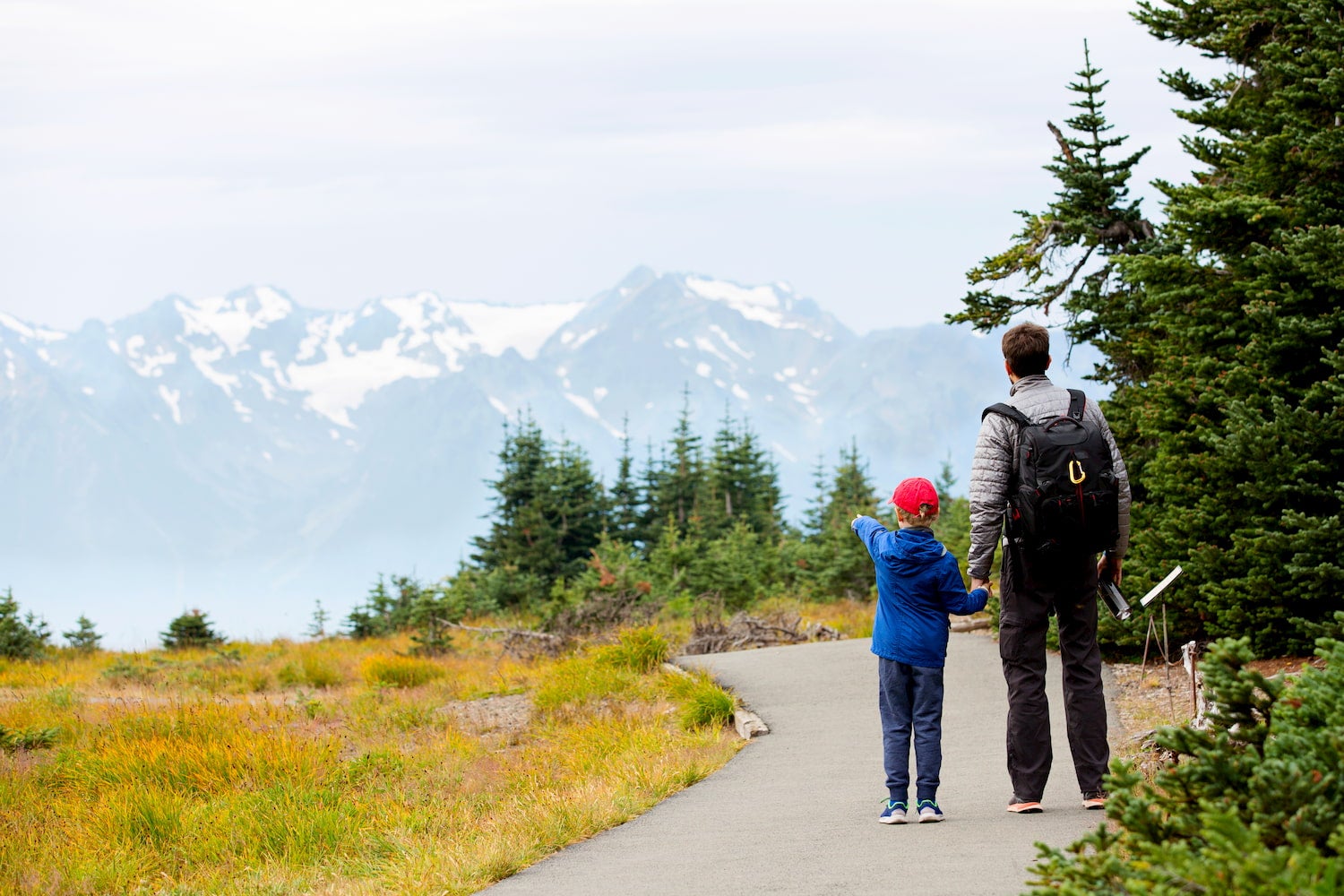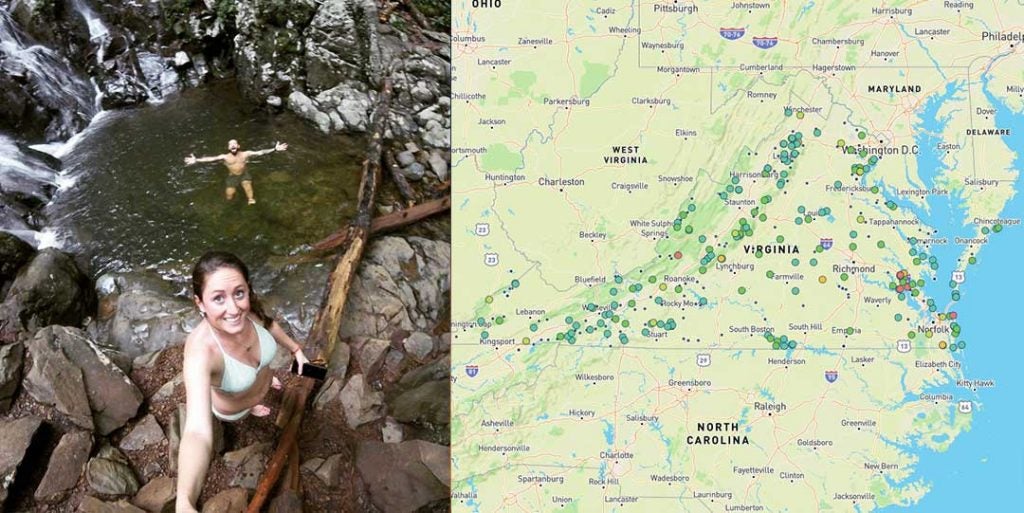The Olympic Peninsula presents visitors with the full glory of the Pacific Northwest. This area of western and coastal Washington is renowned for containing the Olympic National Forest and Park. It is quite literally the last frontier in the contiguous United States, and remained unmapped and unexplored until the beginning of the 20th century.
There are some pretty magical places in and around this World Heritage Site. This guide is best suited for those wishing to camp and experience the highlights of this glorious portion of Washington. The Olympic Peninsula and surrounding attractions can be vast and widespread so we recommend that you take a few days if you plan to explore all these attractions. See our recommended stops below for an Olympic Peninsula Roadtrip.
What to Do and Where to Camp in Washington’s Olympic Peninsula

Stop 1: Olympic National Park
Olympic National Park is undoubtedly the most popular attraction to visitors on the Olympic Peninsula. Encompassing nearly a million acres, the park contains portions of a mountain range, rainforests, pebble beaches, and wildlife galore, all protected by the National Park Service.
As with most national parks, hiking and backcountry exploring are highlights of spending time at Olympic National Park. The park offers day-hikes of varying lengths including coastal routes and valley trails.
For camping, we suggest checking out Sol Duc Campground. The campground contains both tent and RV sites, as well as drinkable water. The campground is named after the nearby Sol Duc falls which many campers choose to see while visiting this stunning northern portion of the park.
There is, however, more Olympic National Park camping to choose from including the beautiful Kalaloch Campground. This campground is worth mentioning due to its glorious pacific coastline views and forested sites, and for being just off highway 101. The grounds offer tent camping, tent cabins, and yurts. The cost is between 22 and 44 dollars depending on the reservation. Fires are allowed and drinking water is provided.
Stop 2: Lake Crescent

Lake Crescent is located near the northern end of the park. The National Park Service explains that “the pristine waters of this deep, glacially carved lake make it an ideal destination for those in search of natural beauty.” Indeed, Lake Crescent seems inviting with its surrounding hiking trails, canoeing opportunities, and picnic areas surrounding the lake.
For Lake Crescent camping, try Fairholme Campground which is scheduled for reopening on April 26th. Visitors to this campground are met with charming lake-side camping and views. The campground costs 10 to 20 dollars per night and offers RV, tent, and group sites. Drinking water is available and pets are allowed!
Stop 3: Olympic National Forest
The Olympic National Forest contains 628,115 acres of forest that’s shared between 4 counties. Visiting popular sites in the national forest is a great option for visitors wishing to stay clear of the more touristed national park area.
This part of the Olympic Peninsula is estimated to contain nearly 300,000 acres of old-growth forest and has five designated wilderness areas. Points of interest include lakes, river dams, and rainforests. For hiking, take an easy walk to see the world’s largest sitka spruce tree. This hike is located on South Shore Road on the east side of Lake Quinault. Also make it a point to see Spoon Creek Falls. This is another easy hike located near Satsop Center Campground just south of Wynoochee Lake. Satsop is a good campground to check out for tent sites and hiking along Wynoochee Lake Trail.
Stop 4: The Hoh Rainforest

The Hoh Rainforest receives 140 inches of precipitation each year. The forest is lush, green, and full of mosses, ferns, as well as coniferous and deciduous species of trees. The Hoh River is a main attraction in the forest, and flows through the main bulk of the Peninsula before reaching the Pacific.
The campground along the Hoh River is an incredible way to experience the Hoh Rainforest. Visitors report feeling like they’re camping in “Jurassic Park.” The campground is located right on the river and 101 freeway. It contains RV sites, tent sites, and fire pits. Pets are allowed.
Stop 5: Olympia, Washington
Olympia is the capital of the state of Washington and is located right at the bottom of the Olympic Peninsula. Out of any city worth visiting during a journey around the Peninsula, we find Olympia worthiest. The city hosts a plethora of parks and nature conservation areas to visit. From the core downtown area, visitors are greeted with views of Mount Rainier and the Olympic Mountain Range. There’s a farmers market and hundreds of independently owned businesses downtown as well.
Getting to Olympia is easy. From Seattle, the interstate 5 freeway passes through Olympia from southern Washington on its way up to Seattle.
Stop 6: The San Juan Islands

The San Juan Islands are a part of Washington State located near the border of the United States and Canada. Many visitors who travel to the Olympic Peninsula make it a point to hop on a ferry and see the rugged pacific coast and sandy beaches of the San Juan Islands.
These islands are truly like no other. They host the largest population of bald eagles in the contiguous United States. Most notable, however, are the resident pods of orca whales that reside in the area. Most visitors travel to the islands for this, and to see the eagles and numerous other birds of prey on the islands.
Travelers can reach the islands by traveling north from Seattle to Fidalgo Island, which is not technically an island. Ferries run from Fidalgo Island to the San Juan Islands. Visitors can have their cars ferried across or go by foot.
Related Campgrounds:
- Farmstead Inn, Lynden, WA
- Bed and Breakfast Cheney, WA
Popular Articles:
Articles on The Dyrt Magazine may contain links to affiliate websites. The Dyrt receives an affiliate commission for any purchases made by using such links at no additional cost to you the consumer.



